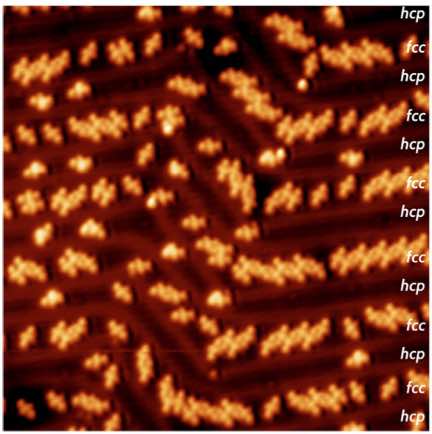Due to the low corrugation of the Au(111) surface, 1,4-bis(phenylethynyl)-2,5-bis(ethoxy)benzene (PEEB) molecules can form quasi interlocked lateral patterns, which are observed in scanning tunneling microscopy experiments at low temperatures. We demonstrate a multi-dimensional clustering approach to quantify the anisotropic pair-wise interaction of molecules and explain these patterns. We perform high-throughput calculations to evaluate an energy function, which incorporates the adsorption energy of single PEEB molecules on the metal surface and the intermolecular interaction energy of a pair of PEEB molecules. The analysis of the energy function reveals, that, depending on coverage density, specific types of pattern are preferred which can potentially be exploited to form one-dimensional molecular wires on Au(111).

Due to the low corrugation of the Au(111) surface, 1,4-bis(phenylethynyl)-2,5-bis(ethoxy)benzene (PEEB) molecules can form quasi interlocked lateral patterns, which are observed in scanning tunneling microscopy experiments at low temperatures. We demonstrate a multi-dimensional clustering approach to quantify the anisotropic pair-wise interaction of molecules and explain these patterns. We perform high-throughput calculations to evaluate an energy function, which incorporates the adsorption energy of single PEEB molecules on the metal surface and the intermolecular interaction energy of a pair of PEEB molecules. The analysis of the energy function reveals, that, depending on coverage density, specific types of pattern are preferred which can potentially be exploited to form one-dimensional molecular wires on Au(111).
